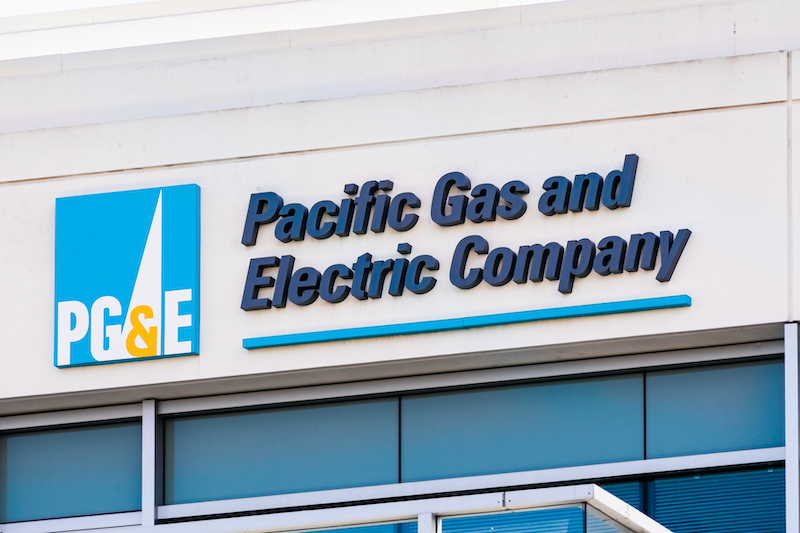July 2020 Vol. 75 No. 7
Editor's Log
Editor's Log: Neglect and Consequences
By Robert Carpenter, Editor-in-Chief
To say it has been a rough decade for Pacific Gas & Electric, one of the largest energy utilities in America, is an understatement. Between 2010 and 2020, PG&E has endured a series of events, primarily self-inflicted, including convictions of malfeasance that would break most major corporations.

At 6:11 p.m. on Sept. 9, 2010, killing eight people when a PG&E gas transmission line exploded in San Bruno, Calif. Subsequent investigation found various sizes of pipe had been were stemmed together, and there were multiple defective welds. When that was combined with increased gas pressures, the pipe joints eventually failed, causing gas to pool until a random spark ignited the blast.
In January 2012, an independent audit from the state of California reported that PG&E had illegally diverted more than $100 million from a fund used for safety operations, and instead used it for executive compensation and bonuses
On April 1, 2014, PG&E was indicted by a federal grand jury in U.S. District Court, San Francisco, for multiple violations of the Natural Gas Pipeline Safety Act of 1968 relating to its record keeping and pipeline “integrity management” practices. An additional indictment was issued by the grand jury on July 29, 2014, charging the company with obstruction of justice for lying to the NTSB regarding its pipeline testing policy, bringing the total number of counts in the indictment to 28. On April 9, 2015, the California Public Utility Commission (CPUC) fined PG&E a whopping $1.6 billion.
On Jan. 21, 2017, PG&E was fined $3 million and ordered to perform 10,000 hours of community service for criminal actions of violating the Natural Gas Pipeline Safety Act and for obstruction of justice.
In 2018, the CPUC fined PG&E $92.5 million for improper communication with CPUC commissioners and staff.
Yet, nothing could compare to what happened on Nov. 8, 2018. High winds and low humidity helped fuel a roaring inferno that swept through an area north of San Francisco. Several small towns were consumed in the raging fire that spread through more than 70,000 acres. People didn’t have time to evacuate, and 84 died as a result. This horrendous event was caused by PG&E’s decaying overhead electric grid. The utility was forced to seek the protection of Chapter 11 bankruptcy as criminal charges and mountains of lawsuits ensured.
On June 18, 2020, PG&E pleaded guilty in Butte County Superior Court of California to 84 counts of involuntary manslaughter and one count of unlawfully starting a fire. PG&E will pay a $4 million fine. It has already agreed to settle claims from insurers, individual fire victims and local government agencies for more than $45 billion. It also received a $1.9 billion penalty from the CPUC.
To its credit, PG&E has fully accepted responsibility for the deadly fires. As the criminal trial ended, interim CEO Bill Smith delivered a heartfelt message of sorrow and remorse.
Sadly, the electrical fire and subsequent deaths and damage – the deadliest corporate crime in U.S. history – was acknowledged by PG&E as preventable. In fact, part of Smith’s statement in court said “…all 23,000 employees are committed to making sure our equipment never again causes a catastrophe like this.” News reports focused largely on the old, poorly maintained, “rickety” wooden poles and loose hanging electric lines that swayed wildly in the winds. Eventually those lines shorted and caused the brittle, almost-antique wooden poles to burst into flames like matchsticks.
Underground installation of electric distribution, telephone and cable lines has become easy, efficient and cost effective. Converting old, at-risk above ground systems to underground conduits is the bane of many utilities – and it’s getting worse as rotting overhead infrastructure consistently fails. But, too often, installing a few new poles to shore up dangling lines and leaning poles is much cheaper than doing the right thing and reducing risk by placing the decaying systems underground.
Nonetheless, the plight of old overhead systems continues to be ignored. Contrasting seasons bring heat and cold upon the outside lines, strong weather events constantly weaken or destroy, and a barrage of various wear and tear on a frequent basis. The life span of normal electric and telephone poles is not infinite and becomes shorter every day.
The 30-year-old argument crafted from now outdated studies has been the basis for many utilities to stand before their state regulators and proclaim that they can only afford to fix, repair or install overhead lines. It’s simply too costly to go underground, utilities often proclaim. Modern technology has tossed those arguments into the trash. With efficiencies of today’s construction tools combined with increased life cycle costs, going underground has never been more affordable, practical and safe.
PG&E apparently will survive as a utility. The overarching questions are: What is PG&E’s takeaway from this latest detestable incident? What is the takeaway for every electric, telephone and cable company in America? Will regulators finally do their research and start pushing for investments in a better solution?
There can be no more excuses. Lives depend on it. •




Comments